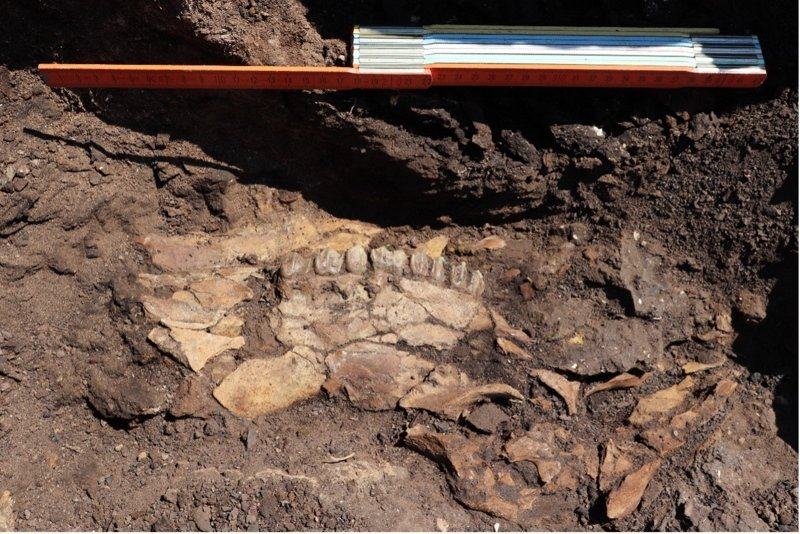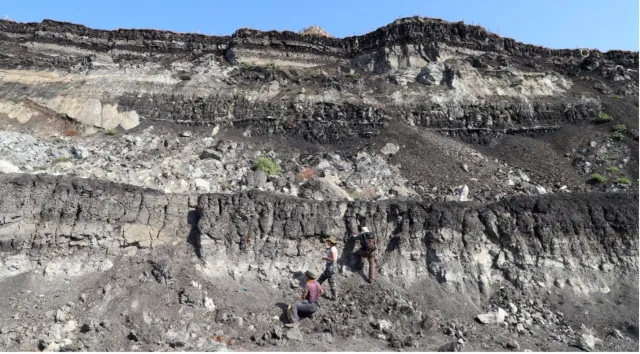A groundbreaking geoarchaeological project in Megalopolis, Arcadia, has unveiled the oldest known archaeological site in Greece, rich with fossils of giant deer, elephants, hippos, and early human tools—buried just 70 meters beneath the Earth’s surface.
This discovery marks a major milestone for paleoarchaeology in Greece, especially in an area that until now had received very little scientific attention. The findings suggest that the Megalopolis Basin served as one of southern Europe’s last ecological refuges during the Ice Ages—a haven for both animals and early humans.
700,000 Years of History Beneath Our Feet
During recent excavations in the local lignite mine, researchers identified five new archaeological sites, including:
The oldest Lower Paleolithic site ever found in Greece (ca. 700,000 years ago)
The oldest Middle Paleolithic site in Greece and one of the earliest in Europe (ca. 280,000 years ago)
To date these sites, researchers employed a sophisticated array of advanced dating techniques, including paleomagnetism, optically stimulated luminescence, electron spin resonance, uranium-series dating, and cosmogenic radionuclide analysis. These were complemented by biostratigraphic and lithostratigraphic studies to ensure accuracy.
Cypress Site: A Window into Prehistoric Wildlife
The oldest site, called Kyparissia, lies about 70 meters below the surface and dates back roughly 700,000 years. Here, archaeologists unearthed Lower Paleolithic stone tools alongside fossilized remains of now-extinct megafauna, including:
Giant deer (Praemegaceros)
Hippopotamuses
Rhinoceroses
Elephants
A macaque monkey tooth
Nearby, the Kyparissia 3 site revealed mainly elephant bones associated with stone tools, indicating human interaction with large animals—possibly for hunting or scavenging.
A Rare Case of Hippo Butchering in Europe
Another site, Marathousa 2, dated to approximately 450,000 years ago, yielded one of the most exceptional finds in Europe: a partially preserved hippopotamus skeleton showing cut marks made by stone tools. This is a rare and direct example of hippopotamus exploitation by early humans in Pleistocene Europe.
Tripotamos: A Technological Leap Forward
The Tripotamos site, about 15 meters below the surface, is estimated to be 400,000 years old. It stands out for its dense concentration of stone tools, which display more advanced shaping techniques compared to older sites. This suggests significant technological innovation during the late Lower Paleolithic period.
Choremi: A Glimpse into the Middle Paleolithic
Finally, the Choremi site, located around 8 meters beneath the surface, dates to roughly 280,000 years ago. Its stone tools reflect Middle Paleolithic craftsmanship, both in form and technique. The site also contains bone fragments, primarily from deer species, some of which show signs of human modification, offering a rare peek into the subsistence strategies of early hominins.
A Landmark Discovery for European Prehistory
These new discoveries in Megalopolis dramatically reshape our understanding of early human activity in southern Europe. Not only do they extend the timeline of human presence in Greece by hundreds of thousands of years, but they also highlight how early populations adapted to diverse environments—interacting with and utilizing the rich megafauna around them.
The research continues, but one thing is clear: beneath the soil of Arcadia lies a prehistoric treasure trove, waiting to shed even more light on the ancient story of humanity.









